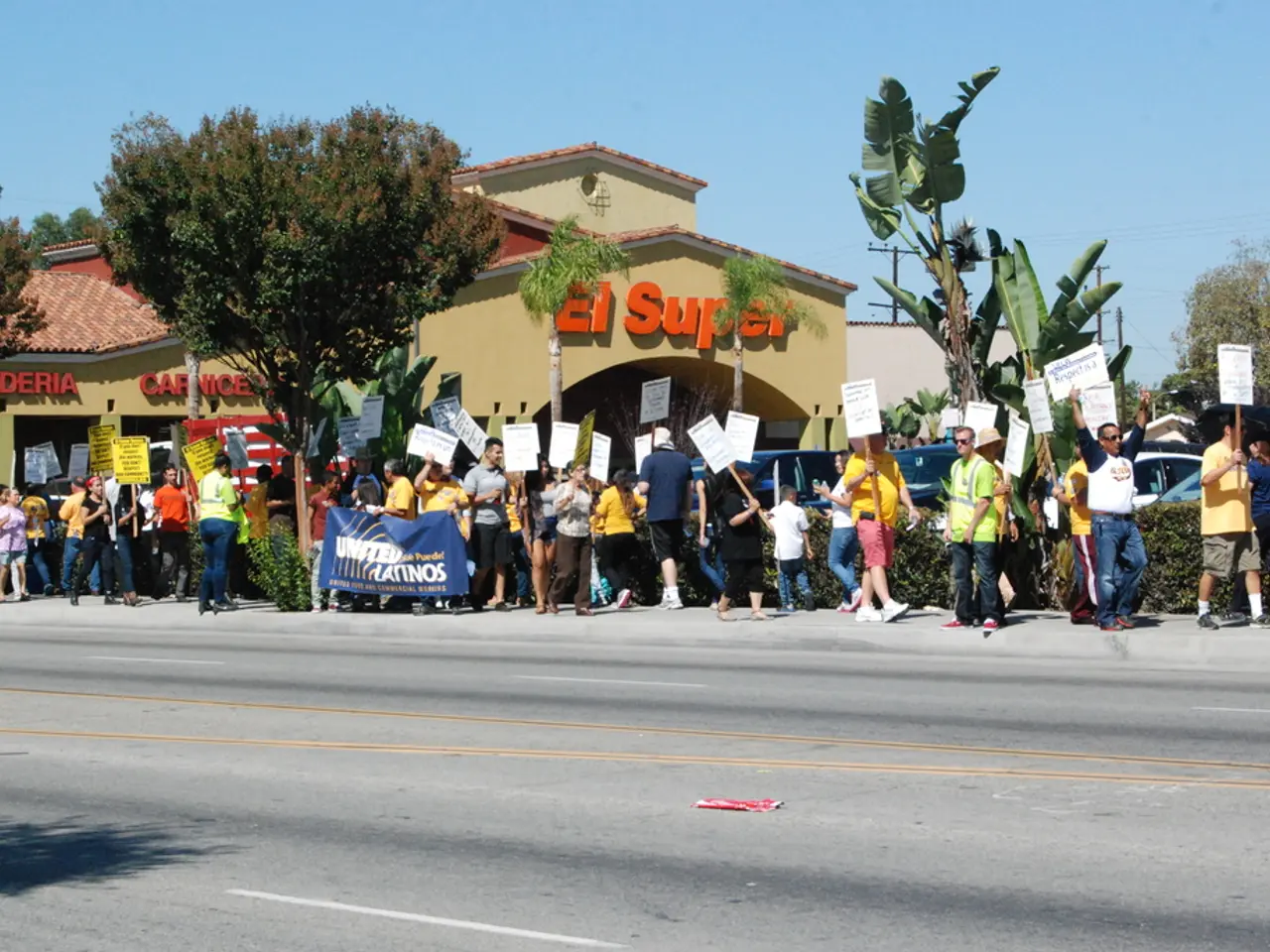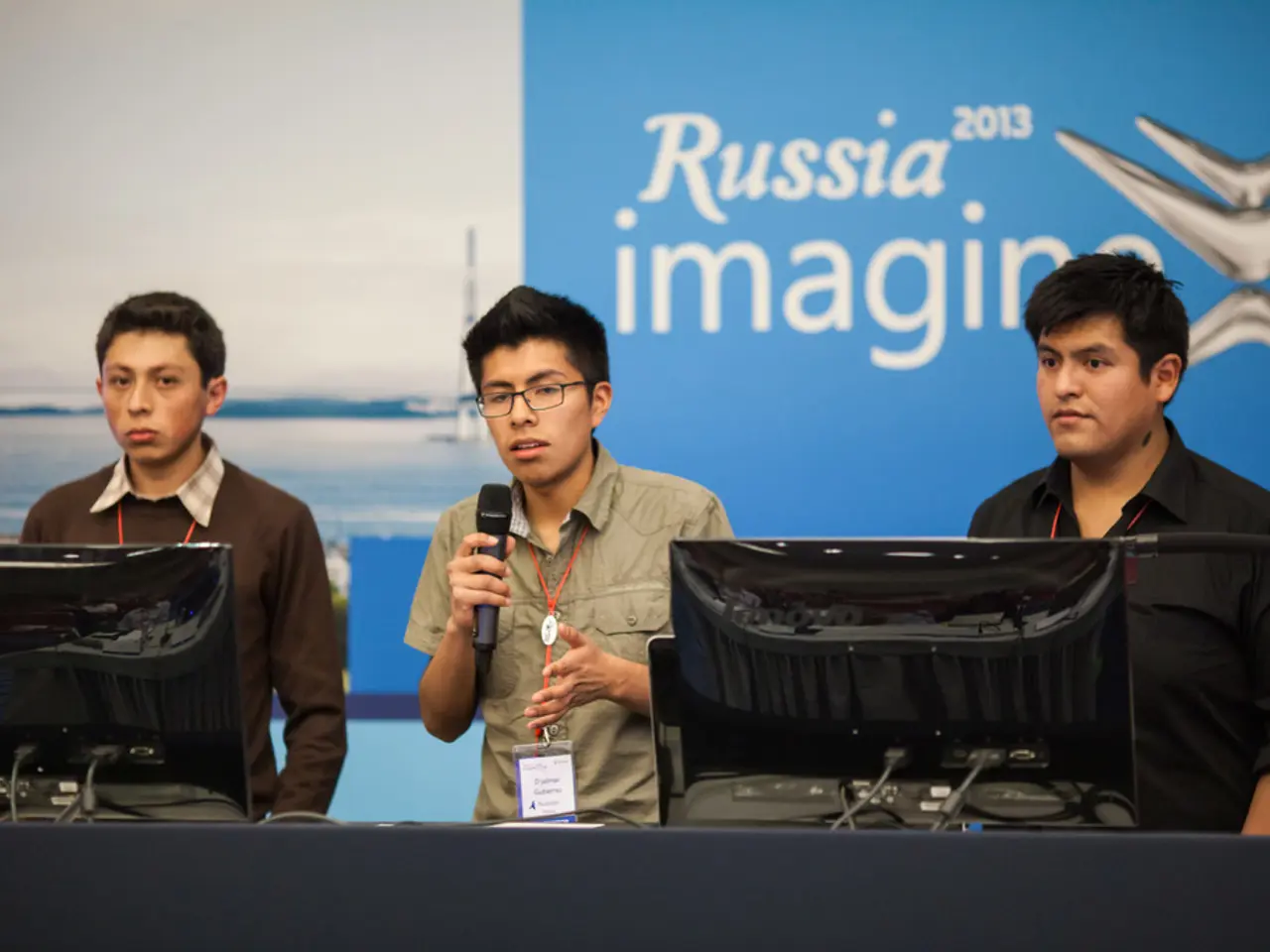Rural Voting Patterns Examined in Surveys Conducted at Montana State University Billings
In the vast and diverse landscape of the United States, the political landscape of rural America stands apart from its urban counterpart. Rural voter decision-making is influenced by a complex interplay of demographic, geographic, cultural, and policy factors, creating a distinct political identity that sets rural voters apart from urban counterparts.
Demographically, rural voters are more likely to lack a four-year college degree. This educational gap is a significant predictor of voting behavior, with candidates appealing to non-college-educated voters, such as Donald Trump, securing large margins in rural areas in recent elections [1]. In contrast, urban voters are more likely to support Democratic candidates, with higher educational attainment levels.
Economically, rural areas are often more dependent on agriculture, natural resources, and manufacturing. This dependence influences the issues that rural voters prioritize, such as trade policy, agricultural subsidies, and energy development. Economic anxieties, including concerns about job losses due to globalization or automation, play a larger role in rural voter calculus than in cities.
Culturally, religious attendance and traditional values are more prominent factors in rural areas. Two-thirds of voters who attend religious services monthly or more supported Trump in 2024, compared to just over half of those who attend less frequently [1]. Issues tied to cultural identity, such as gun rights, immigration, and social conservatism, often resonate more deeply in rural communities than in urban centers, where diversity and secularism are more pronounced.
In terms of media consumption, rural voters often rely on different media ecosystems, with local newspapers, talk radio, and certain cable news channels playing outsized roles in shaping perceptions. This can create echo chambers that reinforce existing views and reduce exposure to diverse perspectives.
Access to polling and voting laws presents unique challenges in rural areas, with longer distances to travel and fewer early voting options. While recent state-level efforts aim to address discriminatory practices, systemic barriers to voting persist in many rural jurisdictions, sometimes exacerbated by state laws.
Several patterns distinguish rural from urban voter behavior. Rural voters are less likely to have a college degree, more Republican in partisan preference, prioritize gun rights, religion, immigration, agriculture, manufacturing, and trade, rely on local news, talk radio, and conservative outlets, face fewer polling places, and have lower turnout in some regions due to barriers. Urban voters, on the other hand, are more likely to have a college degree, more Democratic in partisan preference, more focused on diversity, climate, social justice, technology, services, housing affordability, use national outlets, online platforms, and progressive media, have more polling places, and have higher turnout and more mobilization efforts.
These differences are further shaped by additional influences, such as candidate attributes, migration and labor flows, and digital infrastructure. In primary and non-partisan elections, rural voters may weigh factors like a candidate’s local reputation, experience, or performance in office more heavily than strict party loyalty, though partisanship still dominates general elections [3]. Urbanization and rural-to-urban migration can alter the composition and concerns of both rural and urban electorates, with economic pressures sometimes driving younger, more diverse populations out of rural areas [4]. The role of digital tools in civic engagement and information access may also differ, with urban voters more likely to use online platforms for political participation [2].
In conclusion, rural voter decision-making in the U.S. is strongly influenced by education, cultural identity, economic context, and local media ecosystems, leading to distinct partisan preferences compared to urban voters. While both groups are affected by national political trends, the salience of specific issues, media consumption patterns, and access to voting resources diverge significantly, reinforcing the rural-urban divide in American politics [1]. These differences are further shaped by migration, policy interventions, and changes in digital and civic infrastructure [2][4]. Understanding these factors is crucial for staying attuned to the pulse of rural regions and has implications for the future of political campaigns and policymaking.
- Data provided from recent elections indicates that rural voters have a higher preference for Republican candidates, with figures like Donald Trump securing large margins in these areas due to their appeal to non-college-educated voters.
- Demographics show that rural voters are more likely to lack a four-year college degree compared to their urban counterparts, which plays a significant role in influencing their voting behavior.
- News consumption patterns among rural voters often differ from those in urban areas, with local newspapers, talk radio, and certain cable news channels playing a significant role in shaping their perceptions.
- Economically, rural areas are more dependent on agriculture, natural resources, and manufacturing, which influences the issues that rural voters prioritize, such as trade policy, agricultural subsidies, and energy development.
- Rural voters prioritize gun rights, religion, immigration, agriculture, manufacturing, and trade issues more than urban voters, who tend to be more concerned with diversity, climate, social justice, technology, housing affordability, and services.
- Accounting for factors such as candidate attributes, migration, labor flows, and digital infrastructure, rural voters in primary and non-partisan elections may weigh factors like a candidate’s local reputation, experience, or office performance more heavily than strict party loyalty.
- Public access to polling and voting can present unique challenges in rural areas, with longer travel distances and fewer early voting options creating systemic barriers to voting in many jurisdictions.
- In recent years, research on rural and urban voter behavior has shed light on significant differences between the two, including the salience of specific issues, media consumption patterns, and access to voting resources, reinforcing the rural-urban divide in American politics.
- The role of digital tools in civic engagement and information access differs between rural and urban voters, with urban voters more likely to use online platforms for political participation compared to their rural counterparts.
- Understanding the distinct factors influencing rural voter decision-making is crucial for staying informed about the pulse of rural regions and has implications for the future of political campaigns, policymaking, and the general-news landscape.








